Maggie Langrick At The Helm Of The Artistic Ship
Thursday, December 18, 2008
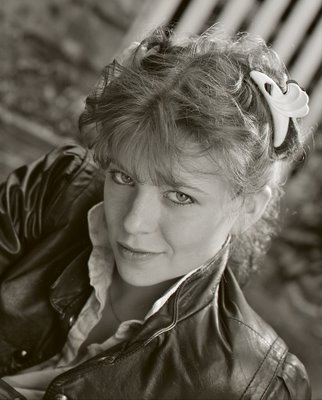
Recently the Vancouver Sun announced the hiring of Maggie Langrick as the new Arts Editor.
In July 1987 I photographed a 16-year-old Margaret Langrick (above) for a profile by John Lekich for the Georgia Straight. Lekich had already written about her two years before for the Globe & Mail when the actress had appeared in director Sandy Wilson's (below right) debut and BC smash hit film My American Cousin. I photographed Langrick in the garden of her mother's house somewhere in the Westside. For years I have been asking Lekich, "Whatever happed to Margaret Langrick. A couple of days ago I found out that the Vancouver Sun had hired a new Arts Editor called Maggie Langrick. I wondered. But this time around I didn't ask Lekich. I asked that infallible oracle of modernity, Google the question. The reply was instant:
From: WikiAnswers Q&A the wiki way
Q: What ever happened to Margaret Langrick?
In: Authors Poets and Playwrights
Answer
Margaret is now known as Maggie Sansom, and she writes for "Echo Memoirs".
I gather that Maggie Langrick, Margaret Langrick and Margaret Sansom are all the same person. I guess that Langrick has had extensive experience in public relations. This bodes well for the Vancouver Sun as they need all the positive public relations they can get these days with the declining opinion that people over 25 have of these hard copy web pages we used to call newspapers.
In the 35 years I have lived in Vancouver I can recall two arts editors who were effective even if one of them was not, strictly speaking, and arts editor. Whenever Max Wyman was at the helm as either and arts editor or a Saturday Magazine editor things were hopping. When Charles Campbell created Queue after having had a difference of opinion with the powers at the Straight his creation was instantly called "a real magazine" by my wife Rosemary who knows everything. The rest of the arts editors are a blur in my mind. To be fair perhaps they may not have obtained the backing or authority from above or "management" as Campbell called them. The Tyee's David Beers did the same as Campbell did for Queue for the interesting, challenging and appealing Sa turday Mix which disappeared as soon as Beers left via his boss's exit to the Chewing Gum Capital of the US.
Since Langrick took the helm as Arts Editor I have already noticed that a piece on Ballet BC's trouble with their roommate, the Scotia Bank, that was prominently covered by the Globe, was ignored by the Vancouver Sun.
If you only stop to think and notice that organizations like:
Ballet BC, the VSO, the Vancouver Opera, the Pacific Baroque Orchestra, the Vancouver Recital Society, the Playhouse, the Arts Club Theatre Company, the Vancouver East Cultural Institute, Gateway Theatre, Theatre Conspiracy, Arts Umbrella, Kidd Pivot, Lola Dance, Karen Jamieson, the Museum of Anthropology, the Vancouver Art Gallery, the Bill Reid Gallery, the Equinox Gallery, Diane Farris Gallery, Bau-Xi Gallery, the New Music Society, the Kay Meek Centre, the Turning Point Ensemble, the UBC School of Music, the Electric Theatre Company, Early Music Vancouver, Goh Ballet, EDAM, Brief Encounters/Solo Collective, Movent/Dances for the Small Stage, Bard on the Beach , Coastal Jazz & Blues Society, and many more galleries, theatre companies, musical organizations, dance companies and all sorts of yearly festivals like the Vancouver Festival or art crawls... and many more that I may have forgotten all advertise in the Vancouver Sun you would think of a situation similar to that of the rhinoceros and the oxpecker or askari wa kifaru . One needs the other. If one is healthy so will the other be healthy.
The same can be said of author and book reviews. Publishers and book festivals also buy ad space. Why is it that we cannot have at least one book review per day insted of a paltry few on a Saturday?
I cannot understand why it is that our Vancouver newspapers seem to:
1. Categorize the arts with food (turkeys for newbies), fitness and style/fashion.
2. Consider reviews important in a city where the lack of real review competition makes a review close to useless particularly when the review is that of a last performance. Its been years since I would read of the rivalry between Les Bewley and Alan Fotheringham. Now that was fun!
3. There is rarely that-in-depth preview explaining for example that if Ballet BC wants to mount a ballet by the famous American choreographer William Forsythe (something Ballet BC did many years ago when cutting edge Forsythe wasn't so famous but our very own John Alleyne knew what was good for us as he indeed did) a sum of upwards of $85,000 in royalty fees has to be paid plus an assistant choreographer has to be brought to Vancouver for supervision (air fare, hotel, etc!). A good pre-view prepares a performance for a viewer. It can inform, educate, inspire and even sometimes persuade a person to turn off the TV and purchase a ticket for a performance.
On a lark I went to a Turning Point Ensemble concert featuring Olivier Messiaen's Quartet for the End of Time. I had not liked Messiaen's choral works in the past and even though this was not one I was reluctant. The performance was one of the most satisfying of the year for me. Like Vancouver Opera's recent production of Eugene Onegin this sort of stuff does not happen often in Vancouver. I talked with Vancouver Sun's musical critic Lloyd Dykk today about the Messiaen and his one word comment was, "Sublime." Dykk did not go to the concert. Perhaps he did not know about it. Probably the reason is that one critic cannot go to everything. It is my feeling that in a "one newspaper town" the newspaper should have more than one music critic, several dance critics and theatre critics and at least one critic who specializes in painting and sculpture.
One solution to the lack of sufficient critics and reviewers is to hire freelancers. The newspaper does not have to spend on health plans, dental plans, etc. In a city where architecture plays such a large part of our life I believe that the only architecture writer is The Tyee's Adele Weder. If true, that is an outstandingly embarrassing fact.
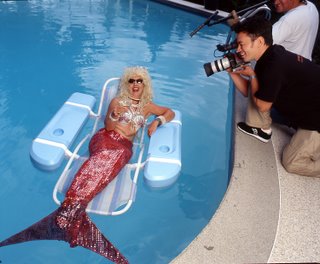
I wish Maggie Langrick all the best in what is going to be a tough job. It is my hope that she will help make our city newspaper into a viable one that promotes, explains, educates and reports on its rich artistic milieu. If the newspaper fails, both it and our art organizations will flounder and perhap sink. Sandy Wilson's floating deck chair will not help the sinking of the cultural ship.
What would be the first priority on a possible arts agenda? I would convene a meeting/party with all the publicists and marketing directors of the arts organizations of our city and suburbs (consider that excellent Surrey Art Gallery and North Vancouver's Presentation House) to discuss ways of promoting the arts. The Vancouver Sun could stipulate deadlines for press releases and requirements for handed in images and art. The Sun should consider that if several newspapers in town use the same images to promote the opera (as an example) this will diminish interest. Original art, while more expensive can be more effective. I would also invite all the public, city, provincial and private funding organizations that give money to the arts to also discuss possible strategy.
In the time of Brooks Joyner at the Vancouver Art Gallery and Jim Delgado at the Maritime Museum I remember that they had lunch every month (sometimes with the then director of the Museum of Anthropology) to discuss joint shows. It was not too long ago that the Presentation House had a show of the photographs of Robert Frank (The Americans) while the Pacific Cinemateque projected Franks avant-garde films. With the cross referencing boon of computers, arts organizations have to organize and work together.
We still don't have a detailed schedule or plan as to what local talent the Vancouver Olympic Committe is planning for 2010. I saw a fabulous Chinese fan dance at the Goh Ballet. I am thinking that the Vancouver Opera's Native Canadian slant on Mozart's The Magic Flute would be an obvious pick. Anosh Irani's Indian plays shown at the Arts Club, the Playhouse production of Kevin Loring's Blood Mixes Inside My Heart should be a must. Many of the brief but funny and interesting dance sketches of Brief Encounters or Dances for the Small Stage would be economical to perform and they would be popular to children, too. BC based plays like the Ruby Slippers production of Trout Stanley would show how good theatre is here. Another option would be the Electric Theatre Company's play Studies in Motion: The Hauntings of Eadweard Muybridge by our young playwright Kevin Kerr.
We have an active new music society and performers like Peggy Lee that get recognition in the NY Times but are all but invisible in Vancouver. We have the Pacific Baroque Orchestra and the Vancouver Symphony that comission work to local and Canadian contemporary composers.
Is VANOC considering these options? Is the Vancouver Sun investigating this?
Julia Margaret Cameron - I Was In Transport Of Delight
Wednesday, December 17, 2008
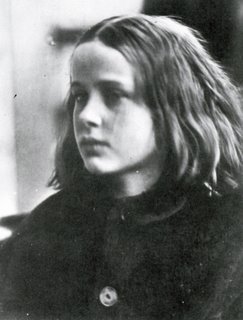
This stunning modern looking portrait of Annie Philpot, which reminds me of photographs of Anne Frank, was taken by the Victorian lady Julia Margaret Cameron (1815-79) in 1864. Cameron was perhaps the most famous and influential portrait photographer of the 19th century. She was criticized by the males of her profession (and interesting, too, so were the abominable canvases produced by the young Impressionists in France) for being smudgy or out of focus. The fact is that Cameron had very sharp eyes and she chose to rack her lens into focus and then unfocus it to her tastes even after her son Harding taught her how. She settled on the Isle of Wight in 1859 when she visited Lord Tennyson and fell in love with the island. She bought two properties (her husband Charles Cameron had coffee and rubber plantations in Ceylon) and named one of them Dimbola Lodge.
It was at Dimbola in December 1863, that Cameron, then aged 48, was given a camera by her eldest daughter, Julia, and husband, Charles Norman. Before actually owning what was an expensive and cumbersome piece of equipment, Cameron had been involved in various aspects of the photographic process - printing negatives and photograms, compiling albums as gifts, posing for photographs and helping to stage compositions. The gift marks the beginning of what would quickly become her all-encompassing application to the 'art' of photography. Setting up the coal store as a darkroom and the glass-enclosed chicken house as a studio, she began her single-handed photographic investigations fervently, annotating a portrait study of Annie Philpot as 'My first success' (the picture above right) which she took in January 1864. Of this first success Cameron wrote about it in her unfinished autobiographical manuscript (1874) which was not published until 1927:
Having succeeded with one farmer, I next tried two children, my son Harding, being on his Oxford vacation, helped me in the difficulty of focusing. I was halfway through a beautiful picture when a splutter of laughter from one of the children lost me that picture, and less ambtious now, I took one child alone, appealing to her feelings and telling her of the waste of poor Mrs Cameron's chemicals and strength if she moved. The appeal had its effect and I now produced a picture which I called My First Success. I was in transport of delight. I ran all over the house to search for gifts for the child. I felt as if she entirely had made the picture. I printed, toned, fixed and framed it, and presented it to her father that same day: size 11 by 19 inches. Sweet, sunny haired little Annie! No later prize has effaced the memory of this joy, and now that this same Annie is 18, how much I long to meet her and try my master hand upon her.
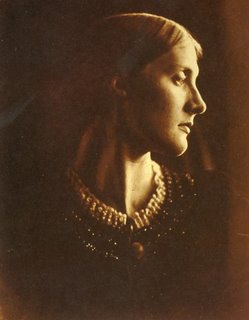
albumen print, oval, April 1867
Julia Prinsep Stephen, née Jackson; formerly Mrs Duckworth (1846-1895), Wife of Sir Leslie Stephen and mother of Virginia Woolf and Vanessa Bell. She sat for Cameron 8 times. This woman is the niece and goddaughter of Julia Margaret Cameron and, like her, a member of the artistic circle which gathered at Little Holland House. She was a renowned beauty and a favourite of the Pre-Raphaelites and sat for Burne-Jones, as well as G. F. Watts and her godmother. From her second marriage to the historian, Leslie Stephen, she was the mother of Virginia Woolf and Vanessa Bell.
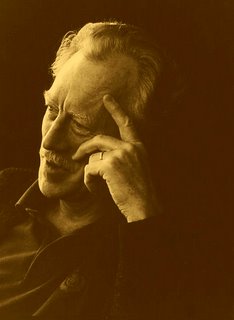 |
| Max von Sydow - A W-H |
The Cameron print, above, left, has a complicated explanation and the sitter a long pedigree. My photograph of Swedish actor, Max von Sydow, above, right, does not carry such a lengthy explanation. While I photographed him later with my lights I took this one with a long, 250mm lens with my Mamiya on a tripod in the Sun Room of the Hotel Vancouver.
Nuts ( & Schlossed) Over Melted Cheese
Tuesday, December 16, 2008
Sunday night was Hilary's birthday. She is Rebecca and Lauren's mother and my youngest daughter. We had a cheese fondue. For dessert Rosemary prepared a Mexican flan served with whipped cream. Our drink was fresh-squeezed mandarin orange juice. The event brought to mind another years before.

The Swiss gentleman and his son sat at my table in Burnaby some 29 years ago to partake of my Swiss fondue. Rosemary thought I was crazy and predicted a disaster. I did point out to her that when my father had moonlighted as a translator for the Indian Embassy in Buenos Aires he had invited the embassy staff to our home for curry.
I was 8 or 9 and I had never seen Bombays before as my mother, and Filipinos, call all Hindus. Hindu with a t at the end is a terrible four letter word in Tagalog so that's why Indians from India are Bombays in the Philippines.
The Swiss gentleman, Mr. Broennimann had been the CEO of Nestlé in Mexico when both my wife and I had taught his son André at an American private school around 1970. Andre (Andy) had decided to study at UBC and his father was visiting.
For once I was able to prove my wife wrong as Broennimann père and Broenniman fils argued on only one of the ingredients. It seemed that the father objected to my use of nutmeg while his son argued that in some Swiss cantons nutmeg was the norm!
My adventure and taste for cheese fondue had begun in 1970 when my daughter Ale's godfather, Andrew Taylor gave us a fondue set for Christmas. In Mexico I was hampered by the strict Mexican prohibition on imported cheeses. I had to make do with whatever I could find. At first I had several disasters where the mixture would curdle until I started mixing a tablespoon of corn starch with the white wine and poured the mixture into the aluminum caquelon (my pot was not an authentic Swiss earthenware pot).
Only once did we try the other variety of fondue, a meat one. We accidentally knocked over the pot on our dining room table and we were lucky not to have been burned.
Andrew's fondue set was made in Mexico and it is a combination of copper and brass. There is no insulation between the alcohol burner and the fondue frame so the whole setup gets incredibly hot. Every once in a while I forget. I touch to move it at the table and suffer from the experience with temporary loss of the finger prints of my right or left hand. Every time this happens I swear to throw the set away and buy a modern one. I remember Andrew and his kind gift, and I renege.
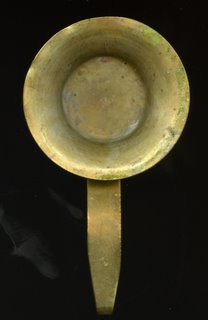
For many years we had pleasant fondues in our Burnaby home. My eldest daughter Ale and I had a routine. The routine was that I was going to do everything possible to prevent her from putting out the flame at the end of our meal with the special damper (seen here). Sometimes my daughter would smarten up and she would hide the damper. I would send her off to the kitchen to fetch something and when she returned I would pull out a soup spoon from my back pocket and would do the honours to her dismay. Strangely, Rebecca has not been interested in extending this tradition even though she and Lauren love my fondue.
By the time we moved to Athlone in 1986 Rosemary started cutting carrots, green onions, red peppers, mushrooms and even brocoli for the fondue. We also enjoyed poppy seed bagels instead of a cut up French baguette. Our favorite bread for fondue, besides those bagels is a Georgian baguette we get at Stongs.
Recipe for Swiss Fondue - 350 grams Emmenthaler
350 grams Gruyère
222 grams Appenzeller
1 clove garlic
dry white wine
corn starch
kirsch
fresh ground black pepper
I rub my pot with a garlic clove and then I add a bit more than half a glass of dry white wine mixed with a tablespoon of corn starch into the pot at a middle to low heat. Once the mixture thickens I begin to add, little by little, the finely chopped cheese (I used to shred it). I add a lot of freshly ground black pepper and half a couple of pinches of nutmeg. When I am ready to take the pot to the table I add a couple of shots of kirsch. The only brand I have been able to find in Vancouver is the Austrian Schloss Kirsch. There are some who say that this is the product singly responsible for the term to be schlossed. This recipe serves four to five guests.
I generally don't reduce the alcohol flame for two reasons. The first is that Andrew's fondue set gets so hot I cannot regulate the flame much. The second is that at the end of the meal there is a delicious brown crust on the bottom called la religieuse (a none nicer nun?) which Rebecca and I fight to not share.
A Post-Literate Moment With A Ghost
Monday, December 15, 2008
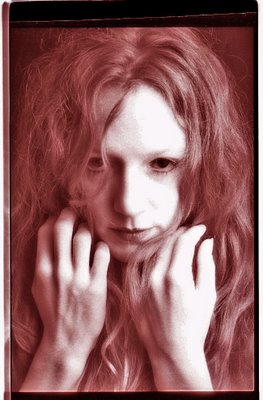 At about this time the NY Times Book Review chooses the 10 best books of 2008. I was happy to notice that one of the books was Julian Barnes's Nothing to Be Frightened Of. I was so moved by the reading of this book that I wrote about it here, here and here. My happiness was short lived. Buried in the little Up Front introduction by the editors, who chose the 10 books, was this startling paragraph.
Once again we have followed up our compilation of 100 Notable Books of 2008 with our list of the 10 Best. In keeping with the "tradition" the Book Review established in 2004, the final choices divide equally between fiction and non-fiction. The fiction list, compressed though it is, conveys the continuing vitality of imaginative prose in this supposedly post-literate moment.
Can that be true that we are living in a post-literate moment, or even worse, post-literate times?
What does one talk about in cocktail parties these days? I have always noticed that when I travel to the US, bars usually have a neon sign that reads cocktails. Have we superseded the term cocktail to the less glamorous drink in Canada? When you go to a party "where they serve drinks" you cannot ask, "What are you reading at the moment?" can you? The right question would have to be something like this, "Do you Twitter?" And if you really want to be the focus of the party you would answer, "Not only do I Twitter but I also vlog (video based blogging)."
I would be banished (pronounced in three syllables with a mock Christopher Gaze Shakespearean English) since I do not know the difference between a Rob Roy and a gimlet nor do I Twitter (I tried it for a day and became bored), Facebook, Flickr or MySpace. It is amazing how verbs so suddenly transitive can be so close to the concept of the Aristotelian Unmoved Mover. They are impacting our language for the worse.
Vancouver Poet Laureate, George McWhirter is in the process of translating Homero Aridjis's Los Poemas Solares which is the latest (2005) book of poetry by that favourite Mexican author of mine. Until McWhirter finishes you will have to live with my poor translation of this poem that has been much in my thoughts as I think of Julian Barnes's Nothing to be Frightened Of. As I have mentioned before Aridjis is probably as agnostic as Barnes but because he (Arijdis) is a poet and Barnes is not he (Aridjis) has license to believe in ghosts.
Recommendations for a Ghostly Existence
When you walk on the street, don't kiss your loved one,
besides not seeing you, you might scare her.
When you are run over by a car in traffic,
don't worry, it will have driven over air.
In a room with a nude young woman, don't be anxious,
your desire will be the beating of an empty heart.
If at daybreak the cat is staring at you, don't pet her,
her flashing eyes are seeing nothing.
If your dog crosses you without knowing that you are there, you don't
fret,
It will have seen a ghost calling it from the other side of the light.
Recomendaciones para la vida fantasmal
Cuando vayas por la calle, no beses a tu amada,
porque además de no verte, la puedes espantar.
Cuando en el tráfico un coche te atropelle,
no te preocupes, habrá aplastado aire.
En el cuarto con una joven desnuda, no te inquietes,
tu deseo será un pálpito en un saco vacío.
Si al amanecer la gata está mirándote, no la acaricies,
sus ojos fulgurantes estará viendo nada.
Si tu perro te atraviesa sin saber que estás allí, no te
aflijas,
habrá visto a un fantasma llamándolo desde el otro lado
de la luz.
Los poemas Solares, Homero Aridjis, Fondo de Cultura Económica, 2005 Mexico
My lovely ghost is dancer/choreographer Lauri Stallings
Banging My Own Drum With One Light
Sunday, December 14, 2008
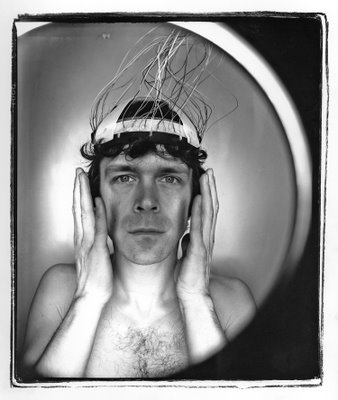 As my job (formerly a profession) as a magazine photographer fades away asymptote-like, I find some small comfort that unlike General Douglas MacArthur I cannot be fired. I am a free lancer. But like him I am fading away as quickly as a poorly fixed photograph. It is a photograph that will become plain dust and not a random dissolution of pixels. Meanwhile I must feed my wife her hot cream-of-wheat with brown sugar in the morning so I need funds. Some of them come from my teaching endeavours. I teach at two places. One is Focal Point and the other is Van Arts. The former has a full-times students program like the latter but it also has photo workshops and 10-week courses. That's where I come in. In the last The Contemporary Portrait Nude class (mentioned here I had 6 students. This was an especially fun and intimate class but not one that will make money for the school. I offered to write an essay promoting my next class The One Light Portrait Photography Course for their Christmas brochure as the class begins in January. Perhaps if enough people read that essay we may get that sweet sum of 12 students, not too big, not too small. The school has two studios joined by doors. I divide my class in two so that in the three-hour shooting sessions there is plenty of time to take pictures. The essay is accompanied by my photograph of Vancouver actor/director Paul Terns which I shot with one ring light. The One Light Portrait Photography Course
Alex Waterhouse-Hayward
Those who work at Focal Point have a standing joke on the two classes that I teach there. They say one is One Light, No Clothes and the other One Light With Clothes. Joke aside they are completely right. As a magazine photographer in Vancouver for 35 years a great majority of my photographs have been one light photographs. And most recently I have further fine tuned my choice to a 2x3 ft soft box placed very close to my subject while standing near a middle gray wall.
In most situations with the exception of my frequent use of a powerful ring flash, that light has never been an on-camera flash. And therein is the problem as to why so many photographs on the internet in such social sites like Flickr and myspace all tend to look the same. The pictures were either taken with existing light or with an on camera pop-up flash.
The Holy Grail of photography for any photographer with gumption should be to find a personal style. Tethering a camera to a modified light (via either a flash cord or a radio slave) such as a soft box or an umbrella mostly happens in the professional photographer’s studio. These kinds of photographs are becoming less frequent. Learning how to use a modified one light is one way, I believe, of rapidly increasing one’s chances of successfully pursuing that elusive personal style.
The 19th century was limited until almost its end, with photography that depended on existing natural light. As soon as electric lights came in photographers and cinematographers were hampered by slow film emulsion. The bright focused lights they used produced the glamorous and mysterious film noir films of the 30 to the 50s. Then this kind of light went out of fashion and a more uniform natural light (still with powerful light units) came into use. Only recently, as digital still camera and digital cinematography cameras have been developed with ultra sensitive sensors, has it been possible to use them in low light situations without additional lighting. In fact Vancouver Sun film critic, Katherine Monk while reviewing Jonathan Demme’s Rachel Getting Married notes that the film is “Shot on high-definition digital video with little or no apparent artificial light…” To me this means that this will be a gritty film with no lighting style. And that is fine. But when you pay good money to escape financial depression and working angst is this what you need? Is it coincidence that the age of Hollywood glamour films occurred during the Great Depression? Is Rachel Getting Married a trend in more unlit digital films? Will movies soon resemble the images of Flickr?
Choosing to take photographs with no additional lighting should be a choice based on purpose while knowing what the other possibilities are. Learning to use one light, be it a soft box, an open flash, a ring flash, a spotlight or a grid spot light should be part of any photographer’s recipe book towards photographic diversity and the achievement of a personal style.
The class runs Tuesdays from 2-5pm beginning January 13
That Wholesome Girl From Tarzana California
Saturday, December 13, 2008
Bettie Page dead at 85. Les. Wiseman 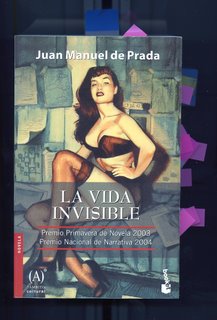 I received that yesterday, understandably, as Wiseman is a fan of the whole genre. My immersion or perhaps awareness of glamour photography, pin-ups and fetish began when I moved with my family to Vancouver in 1975. I swore that when I arrived I would immediately be able to go to any newstand (not so at the time in Mexico City) and purchase a Playboy without feeling guilty or ashamed. This I did. Soon after I found myself being hired (imagine that!) by the folks of the Drake Hotel, Marr Pub, Cecil Hotel and the No 5 Orange to shoot posters to decorate their strip bars. By the standards of today those posters were in good taste, not showing much. I would categorize them as glamour, which curiously is one of the few words in which Americans retain that u. In fact I have two fat folders in my files labeled Glamour I and Glamour II. These two files are within four large filing cabinet drawers labeled Nudes. You see I have taken quite a few nude photographs in my years in this city. But I never indulged in pornography, and not because I didn't try. I discovered that to shoot pornography one has to quench one's innate sense of good taste. Even though I cringe when most people call my nudes by that "oh-so-horrible" epithet, tasteful I have to admit that most of my pictures are tame. If they are tame it is entirely all my fault. I have discovered through the years that a woman's imagination for the erotic is richer, more intelligent and in many cases crasser than a man's. I have been gently urged or pushed by some of my female and some male subjects to go beyond my parameters. In most cases I balked. 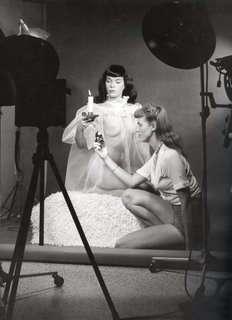 Much of Bettie Page's fame should be attributed to the erstwhile model and photographer Bunny Yeager. Yeager grew impatient at the clumsiness and lack of originality of the male photographers that took her pictures and decided she could do better. She started taking her own pictures (that's a self portrait of Yeager here with Betti Page) and became so good at it that she launched her career as a glamour and pin-up photographer. On the way to fame she took the memorable pictures of Bettie Page with a pair of chettahs while wearing nothing (in some versions) and a tiny leopard-skin swimsuit in others. When Playboy's Hefner invited her into the fold and to travel to Chicago, she decided to stay put in her home in Miami. Her career might have suffered because of this decision.  It was in Yeager's photographs of Page that I discern that wholesomeness that Page is so famously attributed with. Note this from my copy of Bunny Yeager's Art of Glamour Photography (1962 AMPHOTO New York) 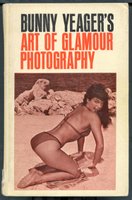 The photographer working in the home can use any kind of lighting he prefers: flashbulbs, strobe, floodlights, or just existing light. Let us go now from room to room to show you what can be done with each surrounding. The photographer working in the home can use any kind of lighting he prefers: flashbulbs, strobe, floodlights, or just existing light. Let us go now from room to room to show you what can be done with each surrounding.
Wing-type chairs are good for portraits, as the model can peek at you from around one of the wings while she sits in the chair...
Now let's go to into the bedroom. A frilly feminine bedroom of course is more desirable that a plain masculine one. A prop that you might care to buy and keep on hand for such purposes is a quilted satin comforter in some photogenic colour like blue. They don't wrinkle easily and I've found you can even wash them in the washing machine when they get soiled without damaging them pictorially. If you have such a prop, you can change the plainest looking bedroom into one of grandeur... well almost. 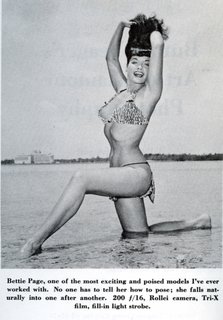 Yeager's little book is just like that, charming in its innocent way of a time that we now see as being quite innocent even if it wasn't. As a photographer I had my versions of Bettie Page. Two that stand out are Maddalena di Gregorio, below left and right, and Katheryn Petersen. The former gave me hints of a darker existence of chains and cuffs but I was much too afraid to look in. 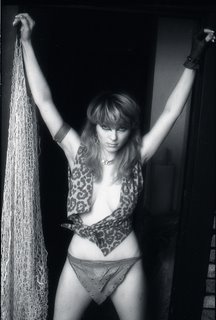 She would smile at me in her generous Italian mother role, almost hiding a much more complex and probably more exciting nature. Or as in the second picture of Maddalena here, she would grow serious and sad and somehow become the universal Flemish Maddona/Eve. It was perhaps here with Maddalena where I lost all hope (gladly) of ever wanting to take pin-up and glamour photographs. Perhaps nobody ever penetrated Bettie Page's veneer of wholesome feminity. It was with Maddalena that I discovered that there was more within and that it was much more arresting. 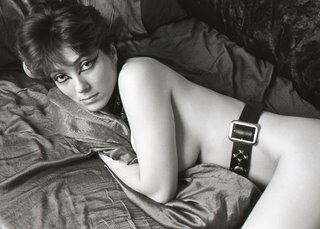 Katheryn Petersen posed for me many times. She was flexible and easy going with a quick smile that almost made me forget her super-model wide cheek bones and astounding eyes. But every once in a while she would say, "Alex when I show up at the studio just shoot. Don't ask any questions." I did this a few times and once when the pictures involved some tying up I told her, "I feel so sorry for you. You look so helpless!" Her retort convinced me I had no idea about her ways, "That's the last thing you are supposed to say," and she smiled and made me feel comfortable again. 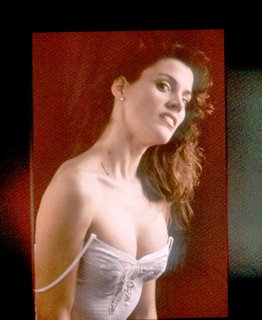 Not that she didn't sometimes scare the hell out of me. Once she became a vampire in my studio. I almost wished I had brought a turtle neck sweater. In 1956 my mother got her job teaching at the ASARCO (American Smelting and Refining Company) town of Nueva Rosita in the state of Coahuila. She told me of a young bachelor mining engineer she found charming called Juan Jaime. Perhaps I was too shy or Jaime was shy, too, since I don't remember talking to him much. We lived in the American Hotel (that's what it was called) as did Jaime for three years. We had our three meals (home cooked) at the hotel. Next to the dining room there was a den/living room with a magazine rack. Juan Jaime would walk in some days and he added his magazines (he must have been subscribed to them) Argosy, True, Esquire (and sometimes!) Playboy. I would sneak in and nervously look and read them. I distinctly remember reading in True an article on a young boxer called Cassius Clay who boasted that some day he was going to be champion of the world. These magazines ( Esquire at the time was a girlie magazine) provided me with my first real glimpses of the female anatomy. My previous experience had been lame Mexican magazines that showed, page after page, pictures of Brigitte Bardot's cleavage. I was far too young to have discerning eyes so I have no recollection of Bettie Page appearing in any of Jaime's magazines. But now and in the last few years I could not see the women on Granville Street in stark white skin and dyed black hair in bangs with piercings, here and there, not to realize where the inspiration had come. 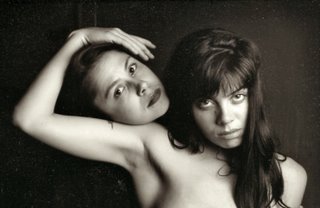 Nor when I first met Bib Naked (seen above with our mutual friend Nina, another muse of mine) quite a few years ago not notice who one of her role models was. Who would have known as I was guiltily looking into Juan Jaime's Argosies that some day I would be teaching a class called The Contemporary Portrait Nude at Focal Point? Thanks to Maddalena, Katheryn and many others I came to understand that you cannot teach nude photography in this century with any kind of justification that would satisfy my inner feelings of what is correct and what isn't. Such a class has to have more. Four years ago when I went with Rebecca and Rosemary to Buenos Aires my new and modern Canadian sensibilities chafed at looking at toothpaste ads showing women in bikinis with big smiles holding a tube of Colgate. I got into massive arguments with my Irish/Argentine rugby nephews when I protested the stupidity of such ads. They questioned my manhood and thought that Canada had corrupted it. I told them I could not justify the photography of women in bathing suits posing by muscle cars or large motorcycles. I could not tell them that I would even opose modern versions of Bunny Yeager's bikini pictures on a beach (with the blast of that handle mount flash). They would not have recognized Yeager nor would they have known who Bettie Page was. In my Focal Point class The Contemporary Portrait Nude I emphasize the humanity of our subjects that face our cameras. I have the school hand out my Model Protocol to any new model. My students read it, too. I listen and watch closely how my students talk and deal with the nude models of our class. Our classes run smoothly in what in most circumstances would offer lots of moments for stress and embarrassment. A few months ago in class 9 (there are 10 sessions in each course) one of my students asked a strangely costumed Yuliya what the purpose of the outfit was. Yuliya, below, with that casual but unsettling glance of hers told him, "It's used for sitting on a man's face." Who would have known, even a couple of years ago that one of the segments of my contemporary nude portrait class would be as contemporary as having one themed on fetish? I now find it entirly logical. 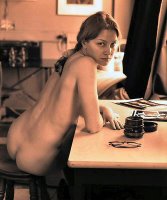 My argument for this is that in spite of Bettie Page's popularizing (all smiles even when she was gagged and tied) this genre called fetish, it really did not achieve a mainstream status until recently. I believe that there are now weekly fetish parties in Burnaby. If they have them in Burnaby ( I dare say this as I used to live there) then it must be mainstream. From Yuliya we have found out that fetish has rules set in stone. "A dom would not do this," she will tell our class, adding, "Only a sub would pose like that." Not too long ago I saw a French photography magazine in the window of Sophia Books with the delightfully luscious Sophie Marceau on the cover. I bought it. Inside I was startled (not by the Marceau spread) by a photograph that featured a woman from the waist down (wearing brief underwear) who had octopus tentacles wrapped around her long legs and slim ankles. The photograph was in an equally startling bold and sharp colour. I immediately coined the expression and labeled the photograph as "nouveau fetish". What then would replace the tired, structured world of fetish in the 21st century where pornography is so prevalent that even it does not shock anymore? I believe I have the answer. A few years ago I had one of my favourite models in my studio. At her request we were making some liberal versions of the Audrey Hepburn she adored. This involved elegant hats, long black satin gloves, fishnets and a silk scarf. She was not wearing much beyond that and my studio was cold. My model put on a coat. It was difficult not to notice that it was a man's heavy wollen Herrinbone coat. I asked her, "Where did you get that?" She looked at me with almost no emotion and said, "It is my father's." I took my picture. It is as startling and as scary as the octopus legs. I cannot show it here. But it was then that I knew that any attempt at nouveau fetish has to come from within the model and the photographer. The shock is internal. It is in the glance of the face. It is more subtle without the need for chains, cuffs or fake (and or real) blood. Would Bettie Page have known this? I am sure she (like my Maddalena) would have known. But good models that they both were, Maddalena is alive and well and living in Milan, they stood their ground and waited for the photographer to discover it and perhaps draw it out. It is the failure of Page's time and of her contemporaries, those male photographers who never seemed curious enough to look further. As for Katheryn? Here she is below with her Bettie tattoo. 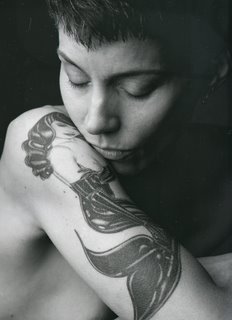 The book cover at the beginning of this, La Vida Invisible (2003) by Spanish novelist Juan Manuel de Prada is a fictional story based on the time that Bettie Page (called Fanny Riffel here) dissapeared at the height of her fame in 1957, her private life of three decades, her fight against poverty and mental ilness (she was institutionalized in California after attacking her landlady) and her emerging from it as a born-again Christian. In the novel, too, is the account on how she was summoned by the US Senate committee headed by Estes Kefauver that was investigating pornography. An attendant at the asylum becomes a friend of Page and she talks to him candidly while he makes sure of taping the conversations. All this is investigated and re-told through a Spanish journalist who goes to Chicago to escape the prospect of a boring marriage. In Chicago he meets up with a woman who has fallen for a violinist of the Vancouver Symphony Orchestra, a VSO going through severe finacial times! De Prada's account of our fair city is not a pleasant one: La calle tenía ese aspecto pulcro, enojosamente pulcro y grisáceo, que los mediterráneos atribuimos a las ciudades suizas; la noche se ahondaba a lo lejos, refugiada en un parque que lindaba con la acera de enfrente, muy escasamente iluminada, a diferencia de la acera a la que se había arrimado el taxi, sobresaltada de farolas que proyectaban sobre el suelo charcos de una luz que parecía la vomitona de un enfermo de paludismo.
The street had a clean and neat look, an upsetting clean neat and grayish, which we Mediterraneans attribute to Swiss cities; the night disappeared into the distance but took refuge in a poorly lit park that bordered the sidewalk across the street while the sidewalk on this side, where the taxi had stopped, was amply lit by street lights that cast puddles of light the colour of the bile of someone suffering yellow fever.
Streaking Meteors Past The Smoking Angel
Friday, December 12, 2008
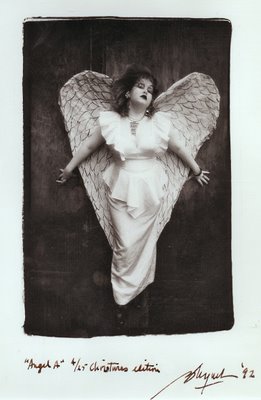 I hate photographs of people with angel wings. The only one I have ever liked is the one hanging in my den. It was taken and given to me by my photographer friend Brian Lynch in 1992. About three years later, while living in a tepee in Vernon he decided to go and watch a meteor shower. Lynch suffered from diabetes and in a previous accident had suffered a leg amputation. This time around while looking at the meteors streaking across the sky he stumbled and fell. In the hospital he was told his other leg would have to be amputated. We were told that he had a heart seizure, not long after, and died. I have missed this man every day of my existence and particularly when I look up at the angel in my den. I know that the little female angel is holding a cigarette in right hand. I smile. Lynch was a large, quiet spoken, gentle and kind gay man. His life changed from one day to the next while proselytizing as a Mormon Elder in California sometime in the late 70s. He rang the bell at a house and the man who opened the door smiled and invited him in. It was Timothy Leary. Like Peter the Rock, Lynch left everything behind and became the man I learned to love. He was as good a photographer as I have ever known. He had a penchant for curating exhibitions. It was from him that I learned that big was not better. He told me once, "Alex, I love photographs that are not bigger than 4x5 inches. It forces the gallery viewer to come up close and almost put their nose on the glass. This creates and intimate situation that does not exist with big photographs." I had a joint show with him at the Helen Pitt Gallery downtown sometime around 1991. A couple of days before the opening he suffered a stubbed toe and went to St, Paul's Hospital. The toe became a gangrenous leg which was then amputated just below the knee. This did not prevent Lynch from showing up to the opening in a taxi. I miss going to his old studio/loft near BC Sugar. I miss having strong coffee and discussing photography, complete with f-stops, chemical formulas and his trademark Emerson effect for b+w printing. As my friends and I mutually wander off into our private lives I miss Lynch's smile and his voice and most of all those big manly hugs of his. As I was looking at the angel today I remembered one of my poet friend Homero Aridjis's poems about an angel. He has written many angel poems. Aridjis, while probably at least an agnostic, has a deep belief (because he is a poet?) in angels. This one is one of my favourites. The Angel Speaks
With words, with colours, in silence
they moved in, gave me wings and hair
locked me into human form.
And now like an mortal
with its silhouette and shadow
I am on the inside of me.
Stonemasons, painters and poets
laboured day and night
to shape me out of their dreams.
I want to escape the body's cage,
take back my original being, that
pure invisibility. Homero Aridjis from Eyes to See Otherwise Ojos de otro mirar Selected Poems Poem translated by George McWhirter, Vancouver Poet Laureate Habla El Ángel
Con palabras, con colores, en silencio,
me cercaron, me dieron alas y cabello,
me fueron encerrando en una forma humana.
Y ahora estoy adentro de mí mismo,
con silueta y sombra,
como cualquier mortal.
Lapidarios, pintores y poetas,
trabajaron día y noche
para darme la forma de su sueño.
Yo quiero escapar de la jaula de los cuerpos
y recobrar mi ser original,
el de la invisibilidad perfecta.
|



























